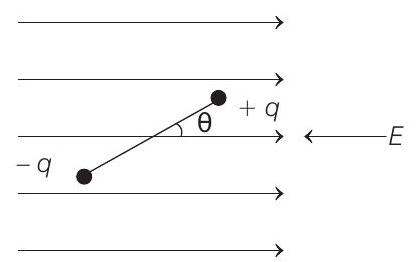Simple Harmonic Motion 5 Question 21
26. A point particle of mass

Show Answer
Answer:
Correct Answer: 26.
Solution:
- A torque will act on the rod, which tries to align the rod in the direction of electric field. This torque will be of restoring nature and has a magnitude
Here,
Substituting these values in Eq. (i), we have
or
As
The desired time will be,
Download Chapter Test http://tinyurl.com/y455aoqv






